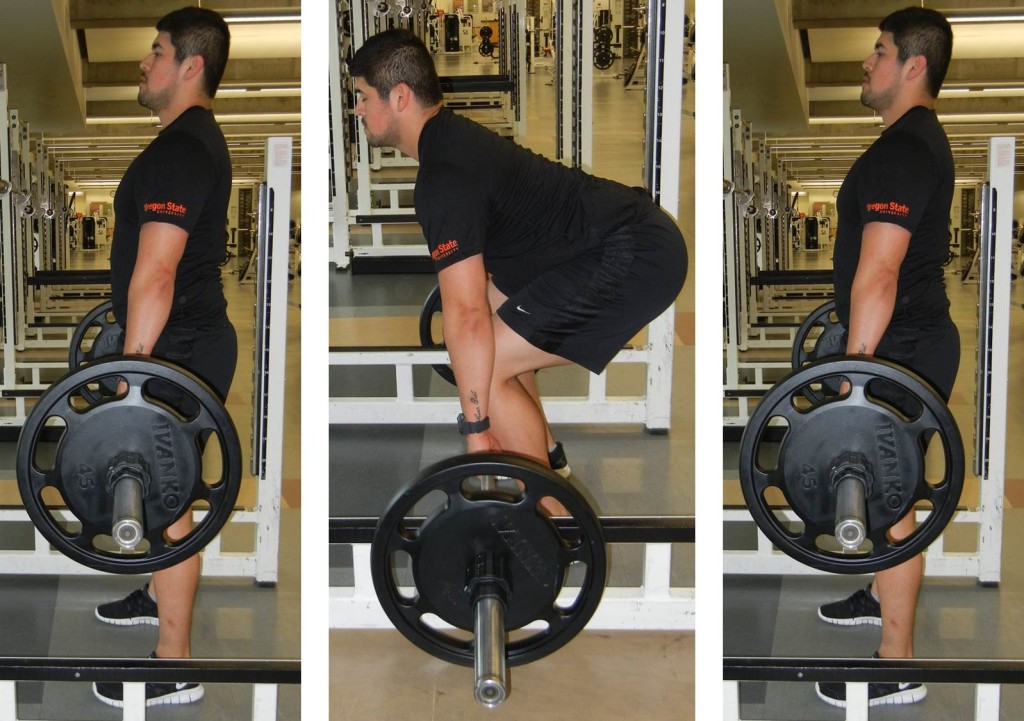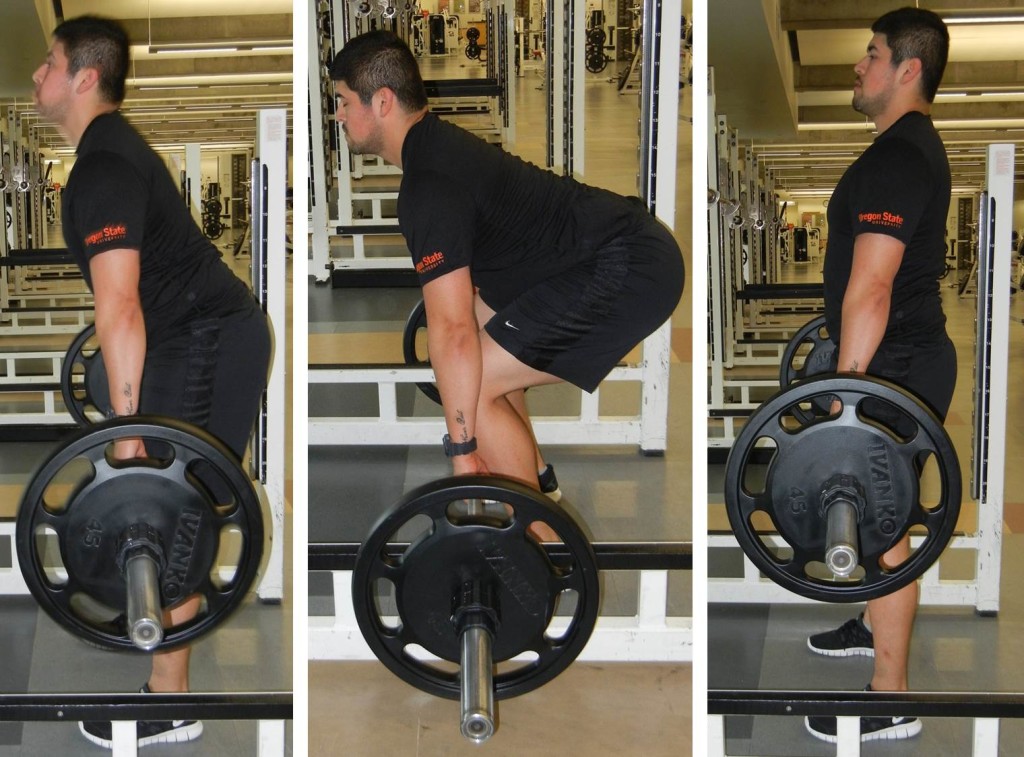Top 6 Weightlifting Mistakes #1 – The Deadlift
#1 – The Deadlift
The very worst offender, #1 on my list, is a deadlift. A deadlift is a tricky exercise – many people do them completely wrong and this is usually because they’ve never really been taught how to do them right and/or they’re trying to lift too much weight. However, if done correctly, it is a great exercise for the reasons described below.
First, the purpose of a deadlift is to work the hamstrings and the glutes. This is good because we typically don’t work these muscles as much as we do our quads, so they tend to be weak which can lead to strength imbalances and an increased risk for pain and injury.
Second, spine researchers are recommending that firefighters lift in a way that mimics a properly executed deadlift (rather than the standard “lift with your knees” recommendation) because this is the way we can generate the most power from the hips and therefore reduce risk of overexerting the back and suffering an injury.
How To Do A Proper Deadlift
The two biggest form mistakes people make when doing deadlifts are: 1) not engaging their abs which results in a non-neutral spine; and 2) not letting their weight shift forward onto the midfoot/toes.
Doing these incorrectly could actually increase risk of back injury so be sure you follow these steps exactly:
If you’re starting from standing:
- Engage your abdominals while still standing.
- Hinge over at the waist being sure that your back stays straight and is not rounded in either direction (“neutral spine”).
- Lower the weights to just below knee level, bending the knees slightly.
- Stand back up by driving your hips forward. Think of trying to point at something with your hips.
- As you come up, your weight should be shifting forward. If you were to do this motion with very little weight, your heels could actually come off the ground. In fact, it is so important to get the weight shift down, you should practice it this way before using heavier weight.
If lifting from the floor (which is now the recommended way to lift a patient/equipment from the floor):
- Engage your abdominals while still standing.
- Lower to the bar by bending the knees. Grabbing onto the bar, hinge over at the waist in preparation for the lift, being sure that your back stays straight and is not rounded in either direction (“neutral spine”)
- Begin to straighten the knees so your hips go up in the air. This generates tension/power in the hamstrings. The bar should begin to come off the ground.
- Stand up by driving your hips forward. Think of trying to point at something with your hips.
- As you come up, your weight should be shifting forward. If you were to do this motion with very little weight, your heels could actually come off the ground. In fact, it is so important to get the weight shift down, you should practice it this way before using heavier weight.
Read the complete series here:
Top 6 Weightlifting Mistakes
#6 – Lat Pulldown
#5 – Bench Press
#4 – Bicep Curl
#3 – Deltoid Fly
#2 – Lunges & Squats
#1 – Deadlift







